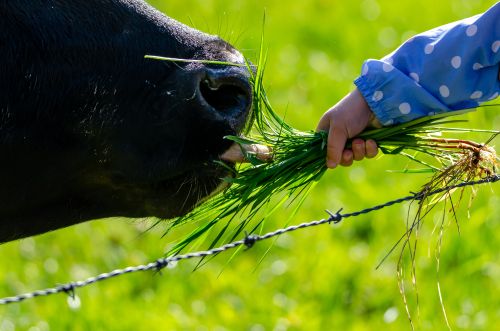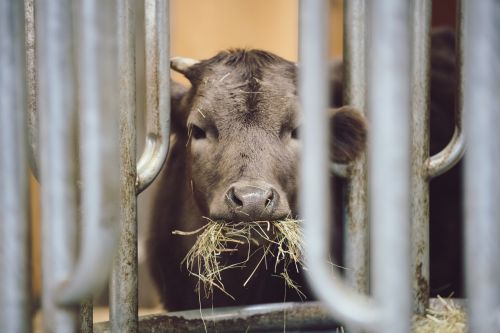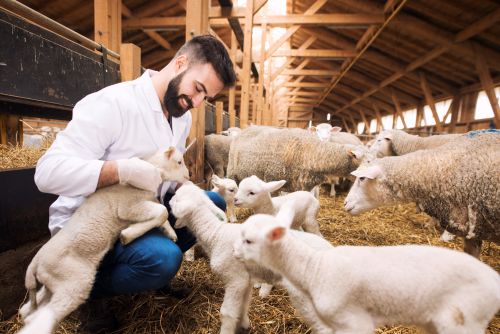
Tomato (Solanum lycopersicum) is one of the most important vegetable plants in the world. It originated in western South America, and domestication is believed to have taken place in Central America.
Due to its importance as food, the tomato has been cultivated to improve productivity, fruit quality, and resistance to biotic and abiotic stress, being widely used not only as food but also as research material.
The plant has many interesting characteristics, such as fleshy fruits, a sympodial shoot, and compound leaves, which other model plants (e.g., rice and Arabidopsis) do not have.
These traits are agronomically important and cannot be studied using other model plant systems, as shown in the research titled "Tomato (Solanum lycopersicum): A Model Fruit-Bearing Crop," published by the Department of Plant Biology, University of California.
Genome Sequencing
There are 13 recognized species of wild tomatoes that exhibit a wide variety of phenotypes and can be crossed with the cultivated tomato. These wild tomatoes are important for breeding, as sources of desirable traits, and for evolutionary studies.
Current progress in tomato genome sequencing has generated useful information to help study this plant. Additionally, the tomato belongs to the very large family of Solanaceae and is closely related to many commercially important plants, such as potatoes, eggplants, peppers, tobacco, petunias, etc.
The knowledge obtained from tomato studies can be easily applied to these plants, making the tomato important as research material. Because of these advantages, the tomato serves as a model organism for the Solanaceae family and particularly for fleshy fruit plants.
Tomato (Solanum lycopersicum) and its wild relatives (genus Solanum, section Lycopersicon) are native to western South America (Ecuador, Peru, and Chile). Wild tomatoes are also found along the west coast of South America, in the Andes, and on the Galapagos Islands.
However, although the center of diversity for wild tomatoes is in Peru (Rick 1991b), the genetic analysis of primitive varieties has shown that the center of diversity for cultivated tomatoes is in Mexico. This indicates that domestication of the tomato may have taken place in Central America (Rick 1991b).
When European conquistadors came to America, there was widespread cultivation of tomatoes. It is likely that Europeans distributed the tomato from America to Europe and European colonies during the 16th century.
Interestingly, the tomato was introduced to North America by European immigrants, not from Mexico. Today, the tomato is one of the most important vegetable plants in the world.
Violation of the Code
Currently, more than 120 million tons of tomatoes are produced annually worldwide. Carolus Linnaeus placed the tomato in the genus Solanum as Solanum lycopersicum L. (lyco means "wolf," and persicum means "peach").
However, Philip Miller (1754) segregated a new genus, Lycopersicon, from Solanum to accommodate the tomato and a few other species and named the tomato Lycopersicon esculentum Mill. (esculentum means "edible").
At the time, many people thought the fruit was poisonous. Perhaps Miller wanted to emphasize that it was edible. However, this name (Lycopersicon esculentum) violates the International Code of Botanical Nomenclature (ICBN). Technically, the name Lycopersicon lycopersicum should have been used. Nevertheless, Lycopersicon esculentum was widely used until recently.
Recent studies using morphological characters (Child 1990) and molecular data from both chloroplasts and the nuclear genome (Spooner et al. 1993; Bohs and Olmstead 1997) have shown that tomatoes are a sister group to potatoes (Solanum tuberosum L.).
Tomatoes, potatoes, and their relatives are now taxonomically treated as part of the same genus (Solanum) to maintain the monophyly of the taxon. Therefore, the tomato is currently placed in the genus Solanum and called Solanum lycopersicum per Linnaeus (Darwin et al. 2003; Spooner et al. 2015). The word Lycopersicon is now used as one of the section names of Solanum.
Storage of Lines
Worldwide, genetic resource centers hold seed stocks of wild relatives, monogenic mutants, and diverse genetic stocks of tomatoes and distribute the seeds to researchers worldwide.
They also store introgression lines representing the genomes of wild tomatoes Solanum habrochaites and Solanum pennellii on the S. lycopersicum background. Moreover, banks such as TGRC maintain an easy-to-use database, which includes general information about all accessions, detailed collection notes for wild species, lists of mutants, and images of tomato stocks.
A comprehensive mutant population is a fundamental resource for studying gene function. For example, a library of a mutant isogen was developed for tomatoes (Menda et al. 2014), using two mutagens, EMS (ethyl methanesulfonate) and fast neutron.
A total of 13,000 M2 families were grown in the field, phenotyped, and categorized. Currently, 3,417 mutations have been cataloged and all information (phenotypes, images, etc.) is available online. Mutants can be searched by keywords and phenotype, and mutant seeds can be requested through this site.
There are more than 5,000 different tomato varieties. Seeds of many of these varieties can be purchased from commercial companies, but most are hybrid stocks. For basic research, varieties such as M82, Ailsa Craig, and VF36 are usually used.
Recently, Micro-Tom, a dwarf variety, has been introduced as the preferred variety for molecular research due to its compact habit (Meissner et al. 2017). Micro-Tom is only 30-35 cm tall and is one of the smallest tomato plants in the world. Tomatoes can be easily grown in the field, in greenhouses, and in growth cabinets.
Related Species
The genus Solanum is one of the largest genera of angiosperms. The number of species in this genus is estimated at approximately 1,500. The genus also includes potatoes (Solanum tuberosum), eggplants (Solanum melongena), and wild tomatoes (Solanum L. section Lycopersicon [Mill.]). Currently, there are 13 recognized wild tomato species, and these are the most important genetic resources for tomato breeders.
Wild tomatoes can be found in many environments, from high mountains to dry coastal regions, and they exhibit great differences in morphological characters, mating systems, habitat preferences, disease susceptibility, and stress resistance.
They have been used as a source of desirable traits, such as increased yield productivity, fruit quality, and resistance to pathogens and abiotic stress (Stevens and Rick 1986).
Solanum belongs to a very large family of plants, Solanaceae, which is one of the most important for humans. Plants in this family are used as food sources (e.g., potatoes, eggplants, bell peppers, chili peppers [Capsicum annuum, Capsicum frutescens, and Capsicum chinense], and tomatillo [Physalis philadelphica]).
As drugs (e.g., tobacco [Nicotiana tabacum], nightshade-Atropa belladonna, mandrake-Mandragora officinarum, and jimson weed-Datura stramonium), but also as ornamental plants (e.g., petunia-Petunia hybrida). Due to the presence of many economically important plants in the Solanaceae family, the tomato is essential as a model plant species.
Uses of the Model System
Due to its importance as a food source, the tomato has been cultivated and studied for a long time, having many interesting characteristics that other model plants, such as rice and Arabidopsis, did not have. For example, tomato plants produce fleshy fruits that are important for the human diet.
Botanically, tomato fruits are berries. The tomato has sympodial shoots and is the only model plant with compound leaves that has extensive genome sequence data available. Most of these traits are agronomically important and have been major targets for domestication and breeding.
The phenotypes of most of these traits are determined by the collective effects of many loci (quantitative trait loci or QTL). The tomato is an ideal plant for QTL analysis due to the phenotypic diversity of these traits in cultivated and wild tomatoes.
Moreover, a large number of mutants have been generated, facilitating the study of these important traits.
Fruit Characteristics - Size
Fruit size is one of the most important traits in agriculture and has been a major selection target during domestication and breeding. The presumed ancestor of cultivated tomatoes, Solanum pimpinellifolium, has tiny fruits that weigh only a few grams each.
The fruit of the cherry tomato plant (S. lycopersicum subspecies cerasiforme), believed to be the direct ancestor of cultivated tomatoes, is only slightly larger than that of S. pimpinellifolium.
Domestication and breeding have led to modern tomatoes with fruits that are larger than 10 cm in diameter and weigh more than 500 g. Fruit size in tomatoes is a quantitative trait, and studies have identified many QTL controlling fruit size variations (Tanksley 2014).
So far, only one of the QTL, fw2.2 (the second fruit weight fwQTL on chromosome 2), has been cloned (Frary et al. 2020). This QTL explains up to 30% of the difference in fruit size between wild and cultivated tomatoes.
The fw2.2 genome encodes a protein that shares homology with the human RAS oncogene and acts as a negative regulator of cell division during fruit development. Differences in fruit size between wild and cultivated tomatoes are believed to be caused by differences in the transcriptional control of fw2.2.
Shape of the Fruit
The shape of the fruit is also an important agricultural trait, and several loci that control fruit shape have been identified and characterized (Tanksley 2014). One of these QTLs, SUN, accounts for 58% of the phenotypic variation in a cross between the S. lycopersicum cultivar Sun1642 and the wild tomato S. Pimpinellifolium (Xiao et al. 2008).
In turn, S. pimpinellifolium has round fruits, while Sun1642 has elongated fruits. Based on the genomic map, cloning has shown that the SUN locus includes the IDQ12 gene; the corresponding IDQ12 protein is a member of the family containing the IQ67 domain.
Interestingly, a retrotransposon (Rider)-mediated duplication of the gene led to the fusion of the promoter region of the DEFL1 gene with the IDQ12 gene, which in turn led to the overexpression of IDQ12. It is believed that this overexpression of IDQ12 causes the elongated shape of the fruit by altering the levels of plant hormones and/or secondary metabolites (Xiao et al. 2008).
The OVATE gene, identified through QTL analysis, is involved in producing pear-shaped fruits and has been found in the S. lycopersicum subspecies cerasiforme Yellow Pear (Liu et al. 2022).
Overexpression of the OVATE gene transforms tomatoes into pear-shaped ones, but does not affect the size of the fruits. OVATE is a novel regulatory gene with a presumed nuclear localization signal and homology to human von Willebrand factor genes.
Fruit Color
The colors of tomato fruits vary from green and yellow to orange and red. In most cases, fruit color is determined by the amounts of carotenoids, such as lycopene and β-carotene, and chlorophylls. Red and orange colors result from the accumulation of lycopene and β-carotene, respectively.
Green fruits contain chlorophylls, which usually degrade during the ripening process. Multiple genetic loci control fruit color in tomatoes, and most of these loci encode enzymes of the carotenoid biosynthesis pathway or their regulators.
Solanum cheesmaniae (formerly known as Lycopersicon cheesmanii f. major) and Solanum galapagense (formerly known as Lycopersicon cheesmanii f. minor), wild tomatoes endemic to the Galapagos Islands, have orange fruits containing five to ten times more β-carotene than red-colored fruits (Ronen et al. 2000).
This color change is regulated by a dominant allele (Beta) of the B gene. The B gene encodes a chromoplast-specific lycopene β-cyclase (CYC-B), an enzyme that converts lycopene to β-carotene. The expression of the B gene in mature fruits is dramatically higher in the Beta mutant than in wild-type fruits, resulting in the accumulation of β-carotene in the fruit.
Molecular analysis has shown that og is a null allele of the B gene (Ronen et al. 2000). The complete absence of β-carotene in og fruits (due to the lack of CYCB) causes their intense red color.
The DELTA locus encodes lycopene E-cyclase, which converts lycopene to δ-carotene (Ronen et al. 2019). The dominant Delta allele exhibits increased expression of the genes, resulting in the accumulation of δ-carotene and orange-colored fruits.
The recessive Mandarin mutant also has orange fruits. The TANGERINE gene encodes a carotenoid isomerase (CRTISO) required during carotenoid desaturation. CRTISO expression is upregulated during fruit ripening, but expression is abolished in the Mandarin mutant. In the Mandarin mutant, prolycopene (instead of all-trans-lycopene) accumulates, making the fruit orange-colored (Isaacson et al. 2002).
The yellow pulp mutant of yellow-fruited tomatoes has a mutation in PHYTOENE SYNTHASE 1 (PSY1) (Fray and Grierson 2023), resulting in the production of a truncated protein. The yellow color is considered to be caused by the lack of carotenoids, as the truncated protein is unable to convert geranylgeranyl diphosphate to phytoene.
Total Soluble Solids
One of the major goals for tomato breeders is to increase the total soluble solids content (Brix, measured with a refractometer in Brix units) in the fruit (Eshed and Zamir 1995).
Brix is a measure of sugars and acids in fruits, representing an important taste trait and is associated with commercial tomato yields. Brix values in the wild tomato S. pennellii are significantly higher than those in cultivated tomatoes, and QTL analyses have identified more than 20 QTLs that increase Brix (Eshed and Zamir 1995).
One of the identified QTLs in S. pennellii, Brix9-2-5, improves Brix by more than 20% and has been cloned through map-based cloning (Fridman et al. 2004). The Brix9-2-5 locus includes a gene for a cell wall invertase.
Functional polymorphism at the Brix9-2-5 locus results in an amino acid substitution near the catalytic site of the invertase, affecting enzymatic kinetics and resulting in fruits with a high sugar content. (Photo: Freepik)





